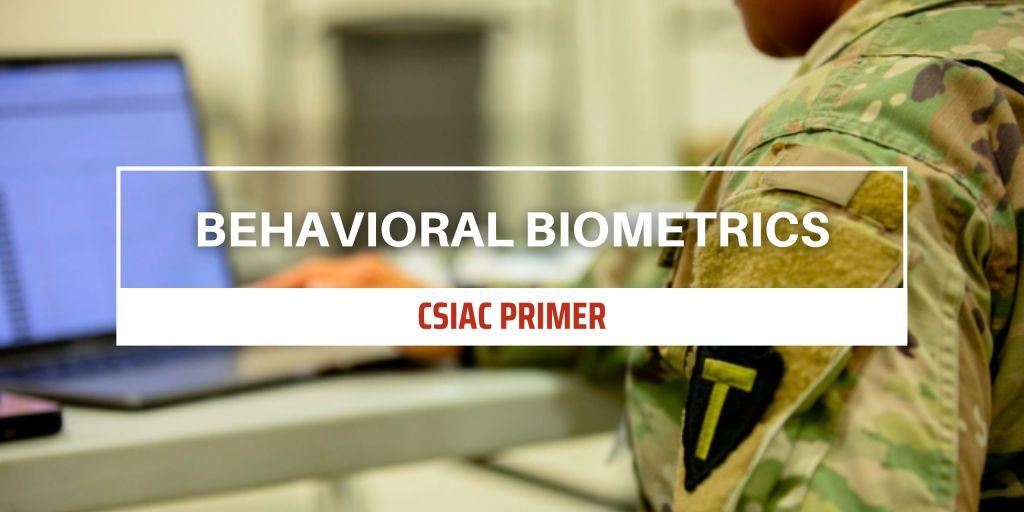Behavioral biometrics are considered by many to be more appealing than standard security methods due to continuous authentication. Continuous authentication makes it unnecessary for users to constantly enter the same passwords or present physical means of validation, further improving efficiency and security. Data quality is a key part of ensuring accuracy and reliability in behavioral biometric systems. The incorporation of artificial intelligence and blockchain into behavioral biometrics holds promising value in accurately interpreting behavioral data patterns and securely keeping and sharing authentication information [2].

POSTED: October 2, 2025
What are behavioral biometrics?
Relevant Applications to the U.S. Department of Defense (DoD)
Biometrics in Afghanistan and Iraq
In 2008, biometric capabilities enabled U.S. soldiers to capture over 400 high-value targets in Afghanistan and Iraq. Fingerprints and iris scans were cross-checked against those of wanted individuals at military bases and checkpoints. Individuals were then detained when biometrics matched or when a criminal history appeared. If standard biometric practices can help successfully identify these individuals, how can behavioral biometrics be used to most effectively identify high-value individuals? If data are gathered on individuals’ walking patterns, typing patterns, and voice inflections, to what extent can they be located [3]?
The Next-Generation Biometric Collection Capability (NXGBCC)
NXGBCC could be the future of biometric systems for the U.S. Army. The device is expected to be fielded in 2025 and will use fingerprints, irises, voice modalities, and faces to identify individuals almost instantaneously. Soldiers performing specific tasks using the device found how easy training and operation could be, even with a lack of experience in biometric technology. NXGBCC would be a more efficient alternative to the current Biometrics Automated Toolkit-Army (known as BAT-A) system used by the Army [4].
Additional Resources
Latest Related News/Articles
References
[1] Behavioral Biometrics and Continuous Authentication in Cybersecurity Systems (Research Gate)
[2] Cybersecurity and Behavioral Biometrics: Advancements, Challenges, and Future Directions in Authentication Systems (Institute of Electronics and Electrical Engineers)
[3] Biometric Assignment in Iraq Results in Dramatic Job Focus for Major (U.S. Army)
[4] Soldiers Experiment with Future Biometrics Collection Capability (U.S. Army)

